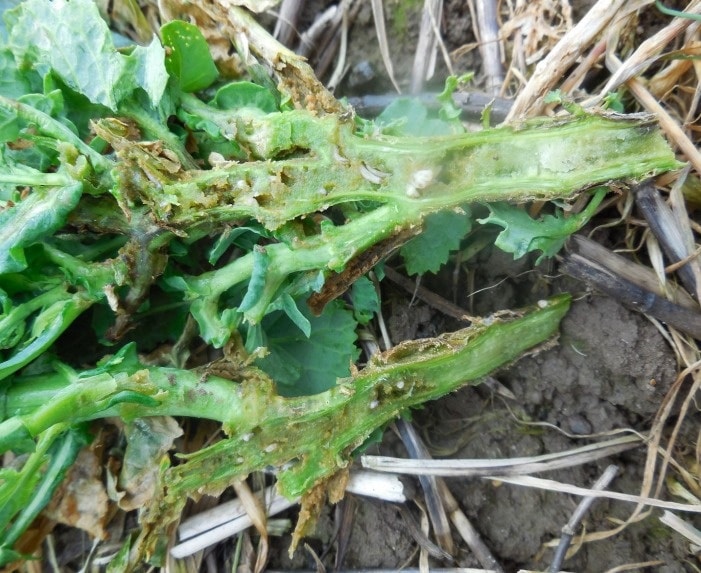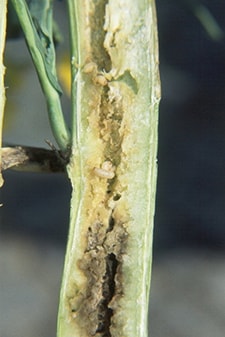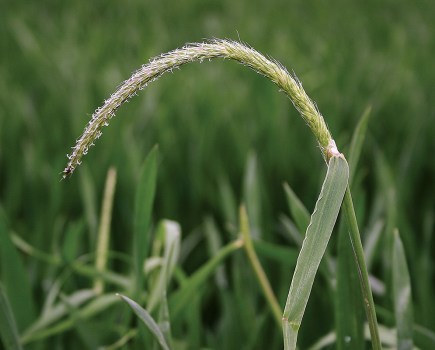Key Winter OSR Growth Characters Limit Flea Beetle Damage

Oilseed rape hybrids that are faster to develop before winter and earlier to commence stem elongation after winter can markedly limit damage from cabbage stem flea beetle larvae, reveals the latest research.
The Dekalb study, carried out with a Cambridge breeding trial significantly affected by flea beetle, showed some of the 30+ varieties grown to the standard, untreated protocol losing 40% or more of their main stems to the pest and suffering seriously stunting at flowering. In contrast, other varieties lost no stems whatsoever and showed little or no stunting (Figures 1 & 2).
 Detailed assessments of branching levels and earliness of flowering as well as main stem losses and plant stunting in early May allowed the extent of damage from flea beetle larvae to be evaluated by variety.
Detailed assessments of branching levels and earliness of flowering as well as main stem losses and plant stunting in early May allowed the extent of damage from flea beetle larvae to be evaluated by variety.
At the same time, rating of varieties for speed of development before winter and earliness of stem elongation after winter enabled any correlations between these agronomic traits and flea beetle damage to be explored.
“Contrary to popular wisdom, higher levels of main stem loss tended to result in a slight decrease rather than any increase in oilseed rape branching,” reported Dekalb technical specialist, Andrew Christensen who undertook the study. “They also resulted in clear delays to flowering.
“We recorded obvious differences between varieties too, with those developing more rapidly before winter losing markedly fewer main stems and suffering noticeably less stunting from flea beetle larvae than those developing less rapidly. The faster autumn developing varieties also tended to be better branched at flowering.
“Main stem losses and stunting tended to be lower in varieties moving into stem elongation earlier after the winter than in those taking-off less rapidly,” he added.
Overall, the study clearly showed varieties like DK Extrovert, DK Exalte, DK Exception and DK Exentiel with more rapid autumn and early winter leaf growth are better able to tolerate larval feeding from the early winter as well as adult flea beetle damage at establishment.
They were as infested with larvae as the other hybrids and the pure line control but, assisted by a greater branching ability, their extra biomass appeared to enable them to cope more effectively with the damage caused.
This ability to grow away from flea beetle larvae damage appear to be enhanced by inherently earlier stem elongation – a character considered especially valuable in seasons where spring growth is badly constrained by prolonged or late cold conditions.
“In addition to their role in reducing flea beetle damage, of course, rapid development before winter and early stem elongation after winter should be equally valuable characteristics in providing the greatest possible tolerance to the slug and pigeon problems that are a fact of life for most winter OSR growers,” noted Anders Christensen.

Figure 1: Main stem losses in DEKALB breeding trials (2015/16)

Figure 2: Plant stunting in DEKALB breeding trials (2015/16)



